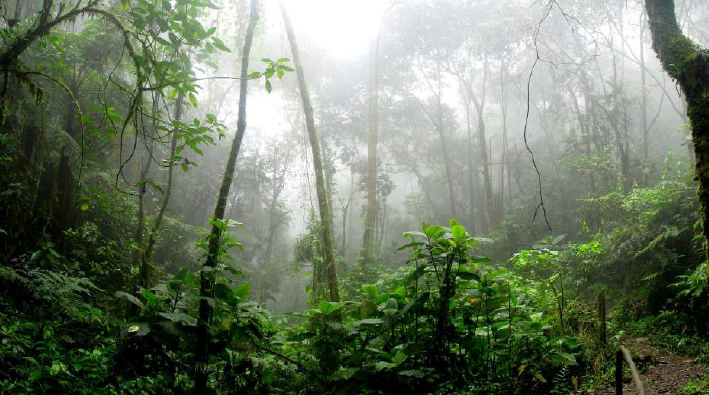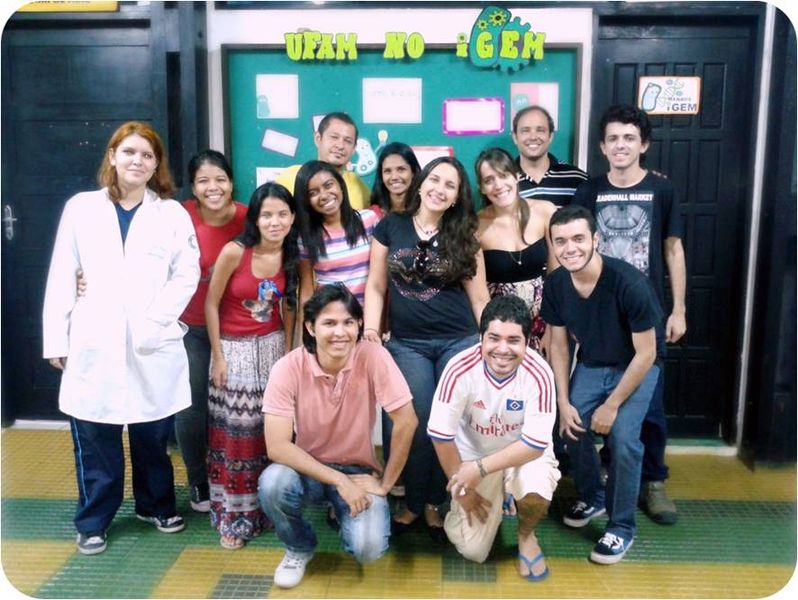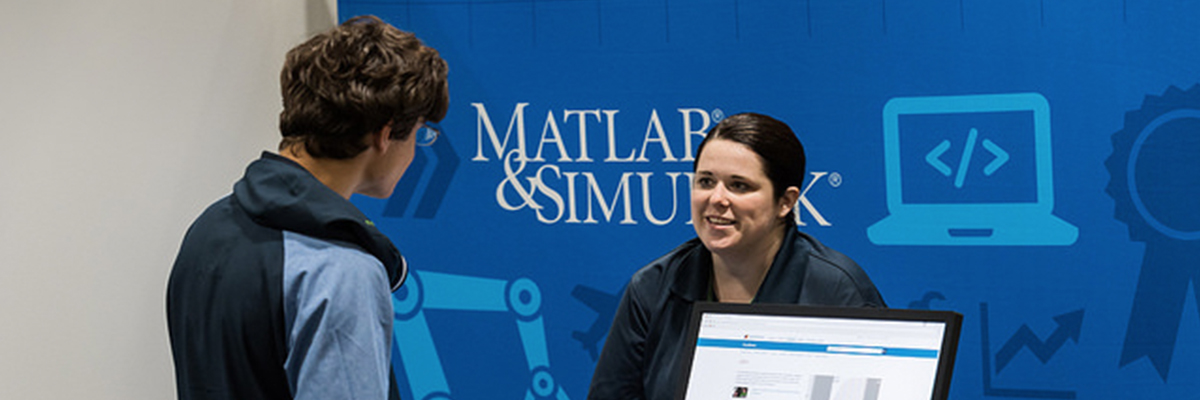The Amazon Warriors - A Tale of Bravery
An ode to the journey of Synthetic Biology in the region and how participating in the iGEM Competition inspired a generation of students to learn, develop and apply disruptive technologies for their people.
Written by Guilherme Kundlatsch
Picture Credits: iGEM teams, Manaus Amazonas-Brazil 2013, UFAM-UEA Brazil 2016
In a cold place lost in the Andean Mountains, a snowflake slowly thaws into a small drop of water. It joins a tiny stream, running down between the rocks. An observer cannot fathom the miracles otherwise witnessed by the water droplets. This is where the Rio Amazonas (Amazon River), the largest and longest river in the world, is born. It twists around the mountains, swivels around the heart of the Amazon Rainforest, and boils with life from lost paradises. The myriad of torrents that feed this sweet stream floods the forest with soul and energy feeding flourishes that one can only imagine, deep in this green ocean. Luckily, one of them is just around the corner of a city populated by more than 2 million people: the Meeting of the Waters, in Manaus.
An unmissable natural wonder in a country marked by natural wonders, it is the place where the dark waters of Rio Negro meet the sandy Rio Solimões, giving final form to the endless Rio Amazonas. Although the tributaries converge, they do not blend. They have different temperatures, speeds, and water densities. The meeting results in a polychrome boundary that can be seen from space. Manaus, therefore, is constantly watching a harmonic dance between the rivers, in a perfect summary of the entire country: the differences coexist, walk together and, ultimately, mix to build the richness of Brazil.
In a city born by the river, it was natural that the pioneer Manauara iGEMers, in 2013, turned their eyes to the idyllic waters. The group was gathered by Professor Carlos Gustavo, who attended the Latin America Regional Jamboree in Colombia during the previous year (in a time when Regional Jamborees still existed) and decided that Manaus would join the party.
“The Latin America teams incorporated and intensified the iGEM Foundation values. We have built a collaborative community, sharing achievements and intensively working in the development of technologies useful to our communities” explains Maria Clara Astolfi, a member of that pioneer team and of every other since then.
Following this spirit, they proposed a solution to a big threat to the Rio Amazonas health: waste frying oils. By engineering Shewanella putrefaciens, they developed a new use to this refuse – instead of intoxicating the river, now it could be used to generate electricity.
However, this was not the only danger hidden in the beautiful waters. A sneaky enemy was gathering forces and becoming a matter of public health. Mercury is widely used in the Amazon Forest for gold amalgamation. The gold is captured, but the mercury flows down through the rivers. It accumulates in the food chain and is eventually served for dinner – fish is the main protein source for the local population. It is estimated that a terrifying 3,000 tons of mercury are contaminating Amazon’s biodiversity and native populations. In 2014, the group presented a treatment station to address the problem. They proposed a system using three different engineered Escherichia coli strains aiming detection, bioaccumulation, and volatilization of the heavy metal. In 2016, the team returned with an improved version of their system, achieving 70% of mercury bioremediation.
The technologies developed and the solutions proposed have a huge potential to benefit the local community. However, the key work developed outside the laboratories may have an even deeper impact in the region. During the past years, they have spread knowledge about Synthetic Biology and Environmentalism from kindergarten to graduate students. They traveled endless hours by boat, using the rivers as highways, to spread the knowledge beyond the city. Although education is the key to solve the problem in the future, authorities can propose measures to mitigate the issue in the present. With this in mind, the group brought heavy metal contamination to the governmental spotlight. By raising the debate with the lawmakers, they are mobilizing the community and demonstrating how science can truly improve everyday life.
“Our projects are rooted in the Society. They discuss challenges that people from our region face on a daily basis, propose solutions to local problems and return to the community the effort of making iGEM feasible in Latin America” summarizes Maria.
The majestic Rio Amazonas, despite being an incomparable natural force, does not follow a straight pathway to the ocean. It slowly meanders through the forest, turning around obstacles instead of overthrowing them. Every snowflake will blend with the sea, moved by the non-interruptible flow. The Manauara iGEMers faced many barriers like the river faces the rocks: evolving, adapting and, ultimately, transforming the environment around them. After a bronze, a silver, and a gold medal, as well as the prize for best presentation in Latin America in 2013, the greenest team in the competition returned last season with a successful debut in the Foundational Advance track, providing a useful CRISPR/Cas9 toolbox to the community and returning home with a new silver medal. The tiny stream started in 2012 grows stronger constantly, bringing new wonders to the shore every year, flowing endlessly. In this city blessed by the Amazonas, brave warriors armed with Synthetic Biology weapons are ready to defend the river.
The iGEM Digest is a collection of stories from the iGEM Community. More information on the iGEM Digest can be found here: after.igem.org/page/igem-digest








